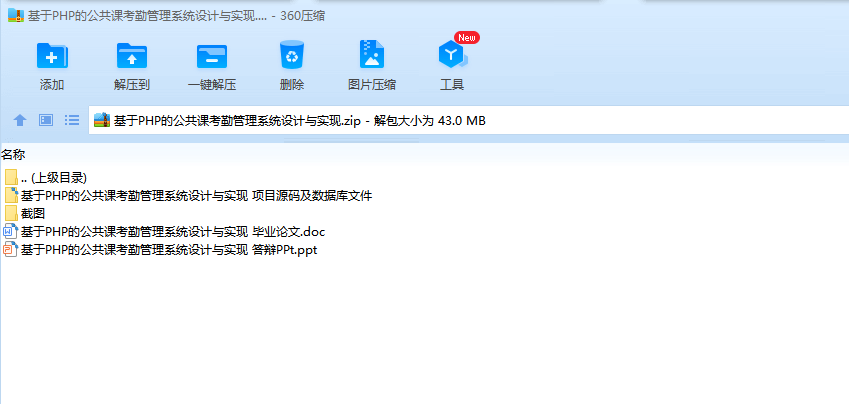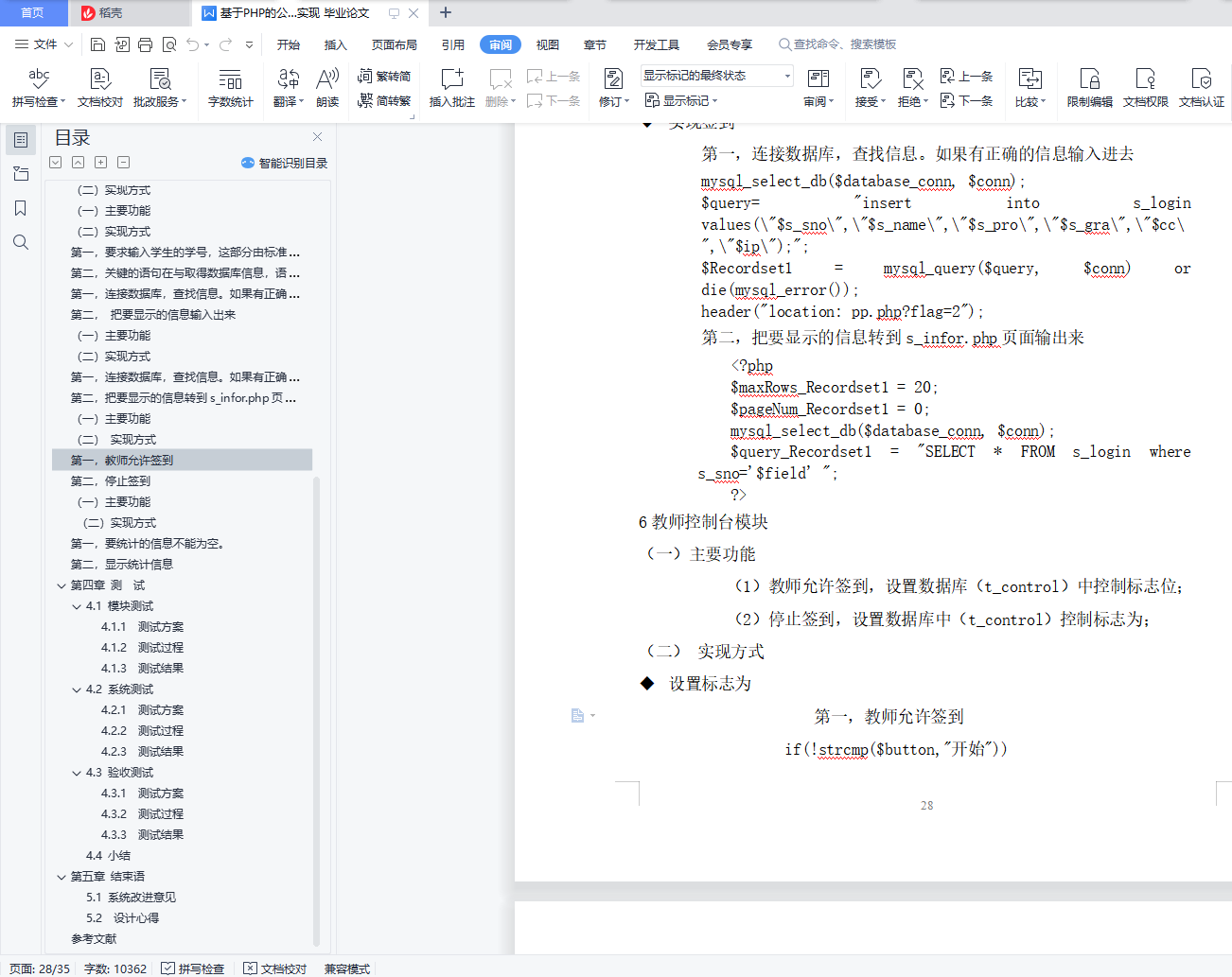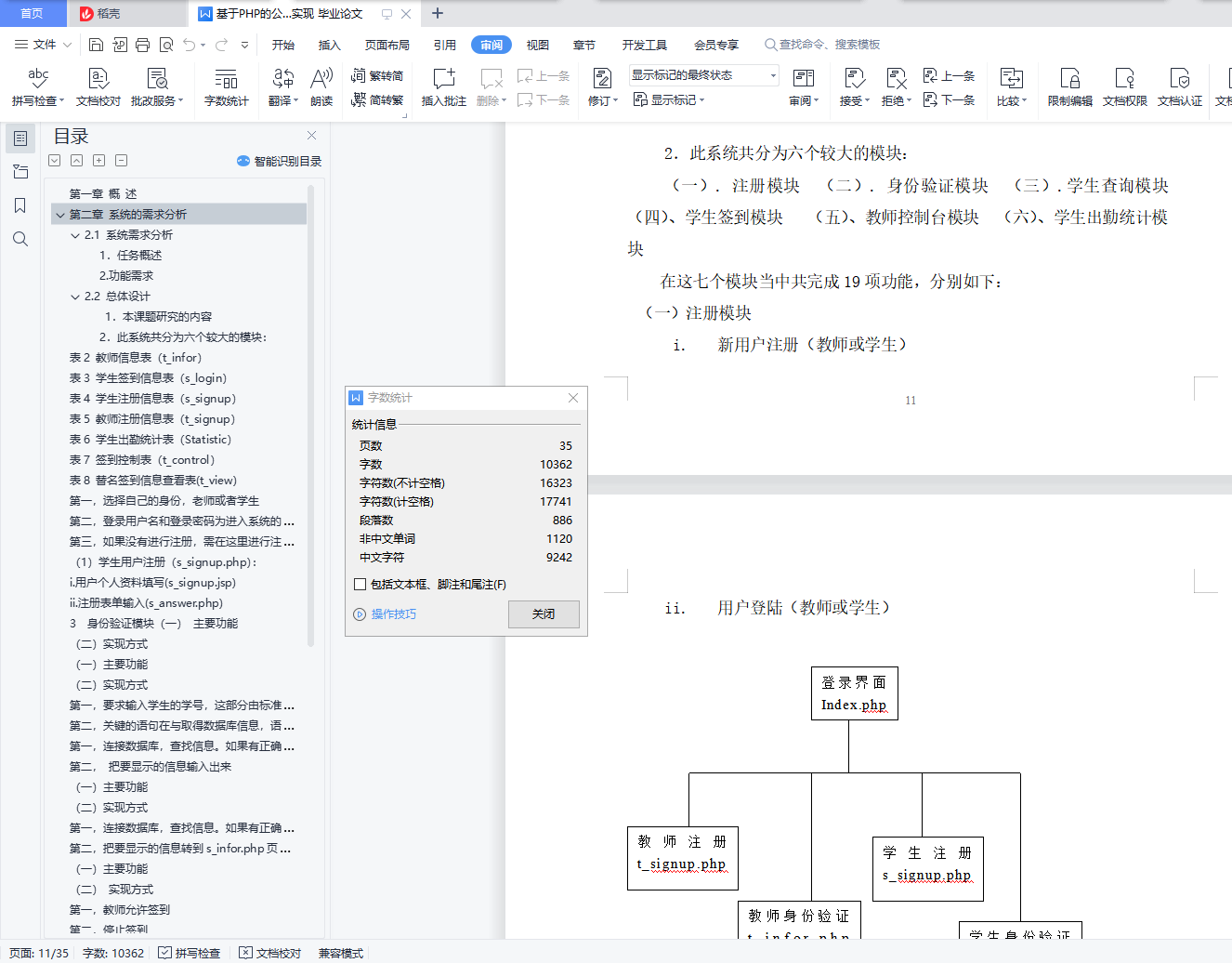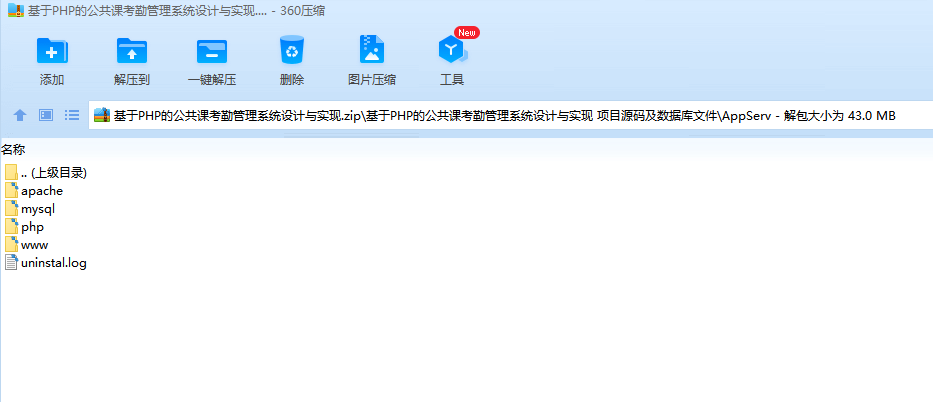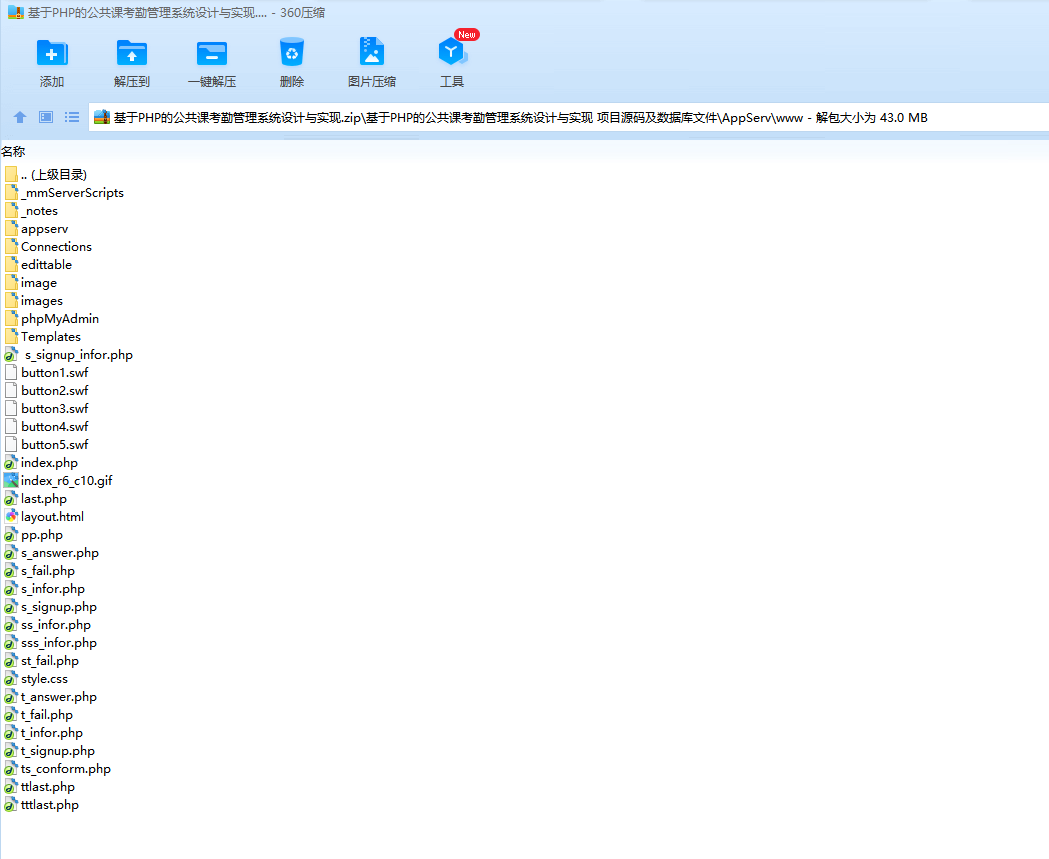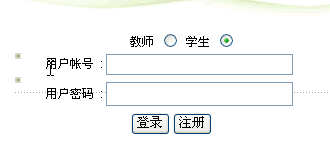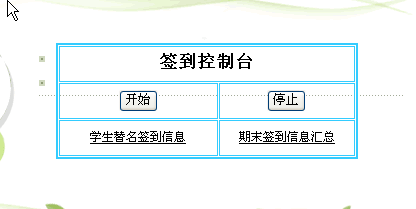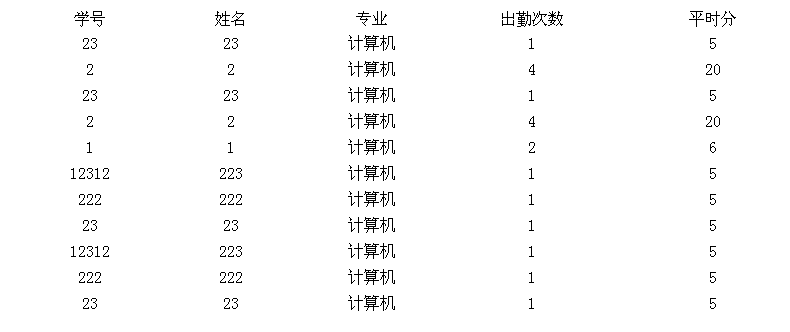摘要
公共课网上考勤系统是典型的信息管理系统(MIS),其开发主要包括后台数据库的建立和维护以及前端应用程序的开发两个方面。对于前者要求建立起数据一致性和完整性强、数据安全性好的库。而对于后者则要求应用程序功能完备,易使用等特点。
经过分析,我使用 PHP+MySQL作为开发工具,并将APACHE作为服务器平台。利用其提供的各种优越性,首先在短时间内建立系统应用原型,然后,对初始原型系统进行需求迭代,不断修正和改进,直到形成用户满意的可行系统.本系统完成了如下主要功能:学生及教师的注册与安全登录,签到并防止冒名签到,平时成绩的统计,及老师及学生对总成绩及个人成绩的查询。从而使系统完全能满足经济性、灵活性、系统性及可靠性的要求
关键字:安全登录,冒名签到,统计,查询
ABSTRACT
The system of public course is a typical application of managing information system ( MIS),which mainly includes building up data-base of back-end and developing the application interface of front-end. The former required consistency and integrality and security of data. The later should make the application powerful and easily used.
By looking up lots of datum, we selected PHP+MySQL,and the server is APACHE because of its objective tools offered a series of ActiveX operating a data-base. It can give you a short-cut to build up a prototype of system application. The prototype could be modified and developed till users are satisfied with it. The system mainly realizes the functions as follows: to safe register,to report for duty ,and avoid it ,to count the grade ,to select the grade.So the system can satisfy such demands as specialty of economy、agility、system and credibility.
Keywords: safe register, security sign in, count ,Query
目录
第一章 概 述
第二章 系统的需求分析
2.1 系统需求分析
1.任务概述
2.功能需求
2.2 总体设计
1.本课题研究的内容
2.此系统共分为六个较大的模块:
表2 教师信息表(t_infor)
表3 学生签到信息表(s_login)
表4 学生注册信息表(s_signup)
表5 教师注册信息表(t_signup)
表6 学生出勤统计表(Statistic)
表7 签到控制表(t_control)
表8 替名签到信息查看表(t_view)
第一, 选择自己的身份,老师或者学生
第二, 登录用户名和登录密码为进入系统的必添资料
第三, 如果没有进行注册,需在这里进行注册
(1) 学生用户注册(s_signup.php):
i. 用户个人资料填写(s_signup.jsp)
ii. 注册表单输入(s_answer.php)
3 身份验证模块 (一) 主要功能
(二)实现方式
(一)主要功能
(二)实现方式
第一, 要求输入学生的学号,这部分由标准的HTML代码生成;
第二, 关键的语句在与取得数据库信息,语句如下:
第一, 连接数据库,查找信息。如果有正确的信息显示出来
第二, 把要显示的信息输入出来
(一)主要功能
(二)实现方式
第一, 连接数据库,查找信息。如果有正确的信息输入进去
第二,把要显示的信息转到s_infor.php页面输出来
(一)主要功能
(二) 实现方式
第一, 教师允许签到
第二, 停止签到
(一)主要功能
(二)实现方式
第一, 要统计的信息不能为空。
第二,显示统计信息
第四章 测 试
4.1 模块测试
4.1.1 测试方案
4.1.2 测试过程
4.1.3 测试结果
4.2 系统测试
4.2.1 测试方案
4.2.2 测试过程
4.2.3 测试结果
4.3 验收测试
4.3.1 测试方案
4.3.2 测试过程
4.3.3 测试结果
4.4 小结
第五章 结束语
5.1 系统改进意见
5.2 设计心得
参考文献
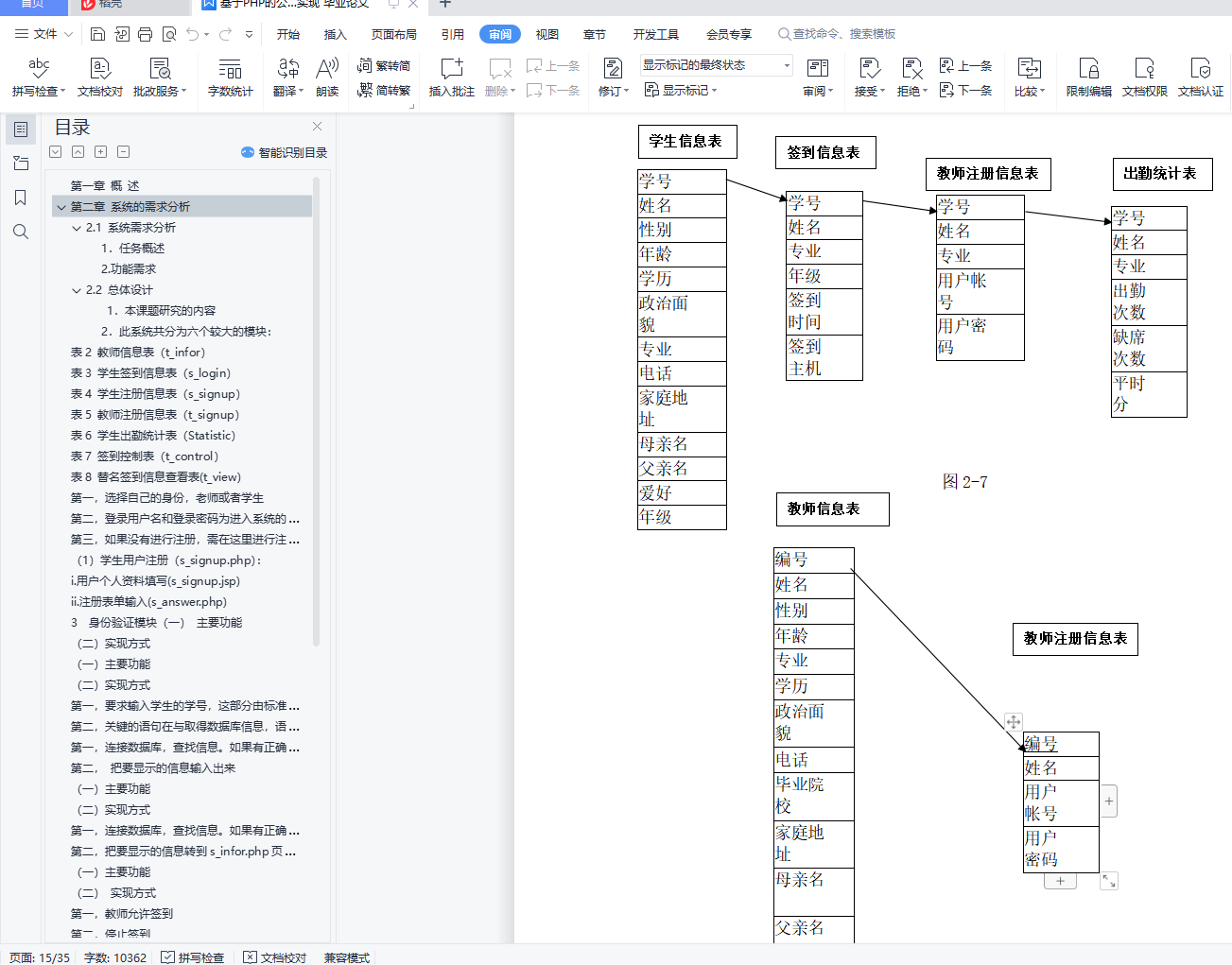
2D{U`~QA7~I8E)KA[T$%{H.png)
